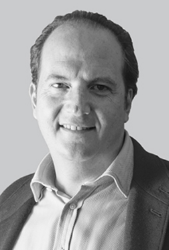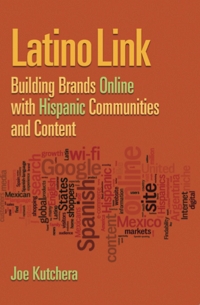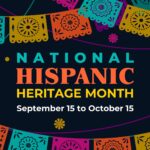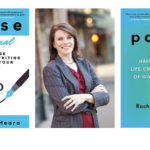This article first appeared on The Huffington Post in English and on Entrepreneur.com in Spanish
Where Donald Trump sees “criminals” and “rapists,” Álvaro Rodríguez sees opportunity among Mexico’s lower-income citizens. Rodríguez created his venture capital firm, Ignia, in 2007 to build companies that serve customers in the “emerging middle class,” or base of the pyramid (BoP), where individual daily incomes equate to $10 a day or less. In Mexico, that comprises approximately 80% of the population.
“The biggest challenge for people in the emerging middle class is to develop themselves at their full potential because of a lack of access to quality products and services,” says Rodríguez. “This is a market flaw. This perception comes from the fact that people at the base of the pyramid are poor, and therefore, investors think that there is no opportunity for business.”
So, why develop business models that target this segment of the population?
“We think a tremendous business opportunity exists not only because of the size and purchasing power of this population, but more importantly because they are desperate to be served,” explains Rodríguez. IGNIA has two funds with US$200 million in assets under management with a portfolio of companies in the financial services, housing, healthcare, and media industries.
Recently, Ignia invested in three mobile-based companies. Abra is a bitcoin-enabled mobile wallet and payments company based in Mountain View, California that aims to make sending and receiving payments as easy as sending a text message. (Mexico is a key market in Abra’s international expansion plans.) Secondly, Pangea Money Transfer developed its mobile app to help its customers transfer funds internationally to a receiver’s bank account, debit card, or 18,000 pickup locations. Over 13 million migrants of Mexican origin live in the US, sending US$25 billion in remittances back to Mexico annually. And third, Sr. Pago (“Mr. Payment” in English) enables both banked and unbanked merchants to accept credit and debit card payments via its mobile card reader.
“If you are going to serve the emerging middle class, you need to be low cost and technology helps you do that. Today, the successful businesses that serve the base of the pyramid are very people intensive. We think that smart phones will change that,” explains Rodríguez. “In Mexico, we already have over 70 million smartphone users. In fact, it has become a challenge today to buy a feature phone. So smartphones in the emerging middle class are a reality.”
Of the ten companies in Ignia’s portfolio, the eyeglasses retailer, “Ver de Verdad” (“See for Real” in English), provides yet another compelling example. Approximately 70% of the Mexican population at the base of the pyramid does not have access to eyeglasses. And when you walk around low-income neighborhoods in Mexico City, you will see why: there are no retailers that sell eyeglasses. Most retailers that serve the top of the pyramid, or upper class, sell eyeglasses for $100 dollars or more. In contrast, Ver de Verdad sells eyeglasses for $350 Mexican Pesos, or, $17 U.S. Dollars. This is affordable for the end consumer and the retailer earns a 70% margin on its product.
Ver de Verdad may not solve the issue entirely of providing access to eyeglasses for the emerging middle class, but Rodríguez hopes that other companies will see the success of its portfolio companies like Ver de Verdad and then provide products and services to the base of the pyramid.
This is one of Ignia’s main objectives: to provide a demonstration effect. Rodríguez believes that the only way for multiple venture capital funds, like Ignia, to target the base of the pyramid is if Ignia can demonstrate success with the companies in its portfolio as well as a fund overall.
“What inspires me is the fact that the Mexico of tomorrow will be built by the small and medium sized businesses of today,” says Rodriguez. “This demonstration effect will break this market flaw, showing that the emerging middle class is just as viable and successful a market as the top of the pyramid.”
Rodríguez entered this market when he graduated from Harvard Business School (HBS). His wife had one year remaining before she finished at Harvard, so they stayed in Boston for an additional year. “The only job I could find was at a nonprofit organization, Accion International, one of the pioneers in microfinance. I had no idea about microfinance. I was a young, obnoxious HBS graduate. But, that experience made a tremendous impact. I started spending a lot of time on the ground in Ecuador, Bolivia, and here in Mexico…talking to micro-entrepreneurs, understanding their needs, aspirations, ambitions, problems and fears.”
This came at a critical juncture in Rodríguez’ professional life when he saw that he could connect capital markets to the emerging middle class. Previously, he worked closely with big investors on Wall Street as the former Chairman of the Board of Compartamos Bank, the largest microfinance bank in Latin America with more than 2.5 million clients. Michael Chu, his co-founder at IGNIA, had a similar profile. As a former partner at Kohlberg Kravis Roberts & Co., one of the world’s premier private equity funds, he knew how to work with investors on Wall Street, but also with the base of the pyramid.
“We saw an opportunity to invest in entrepreneurs that were looking to develop business models that would address those needs, but not only invest in them, but give them a lot of support,” Rodríguez says. “Entrepreneurs need much more than a check. They need help with strategy, opening doors to new clients, back-office operations, and so much more.”
Not only does Ignia want to create a supportive culture for entrepreneurs. They also want to bridge the cultural divide between investors and base of the pyramid communities. Some non-profit organizations, for example, helicopter in, build a house and then go back to sleep at the Four Seasons. Instead, he suggests that partners of Ignia enter neighborhoods with the mindset of learning from and spending time in those communities.
A development bank once surprised him when they visited a potential portfolio company together. “We were going to Chimalhuacan, the poorest slum in Mexico City with about one million inhabitants. They were tremendously nervous about how safe it was. I did not expect this from a development bank,” says Rodríguez.
Rodríguez compares this situation to New York City. When wealthy investors buy into an eyeglasses store on Madison Avenue, they can usually relate to it. But, if we ask a well-to-do investor about investing in an eyeglasses store in the Bronx, they may react by saying, “Whoa wait. Where?”
Capital often flows more easily in fancier, more comfortable neighborhoods. But entrepreneurs targeting low-income audiences need investors just as much. What inspires Rodríguez is connecting Wall Street with Mexico’s emerging middle class and the base of the pyramid communities.








